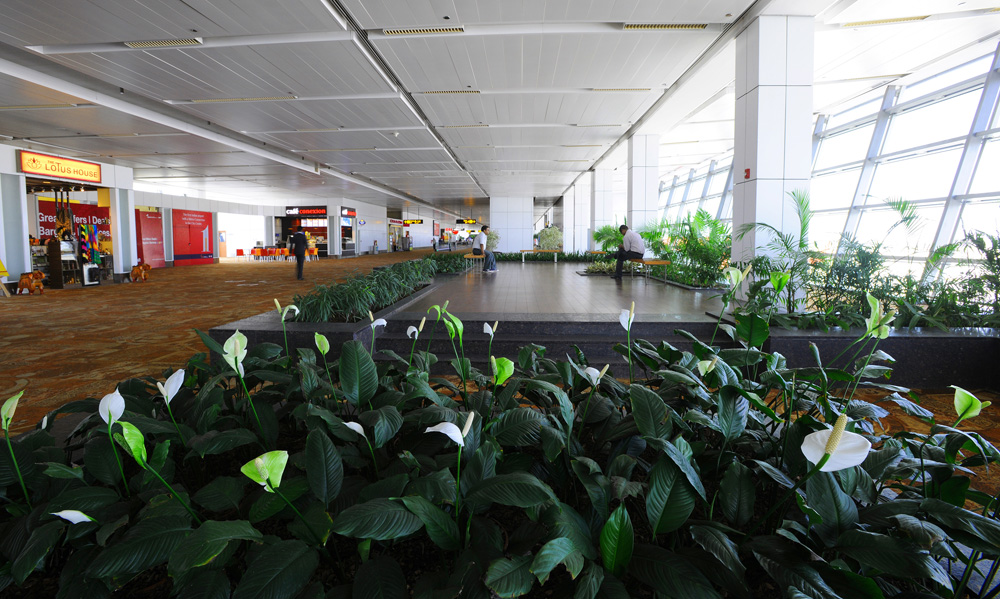
In the age of environmental awareness, the aviation industry finds itself at a pivotal crossroads, with airports emerging as focal points for sustainable transformation. Air travel, while connecting the world, has long been associated with significant environmental impacts, including high energy consumption, greenhouse gas emissions, noise pollution and resource consumption. Recognizing the urgent need for change, airports are stepping onto the runway of sustainability, redefining their roles as not only transportation hubs but also as eco-conscious entities committed to minimizing their environmental footprint.
With increasing pressure to go green, below are initiatives and strategies airport operators can take to fulfill their sustainability commitment.
One of the primary areas where airports can enhance sustainability is energy management. A holistic approach involves mapping the energy usage across the entire facility and identifying opportunities for optimization. Implementing energy management systems (EMS) can provide airports with real-time data on energy usage and help identify areas of inefficiency. EMS can automate lighting and HVAC control processes, ensuring that energy is only consumed when necessary. This fine-grained control allows airports to optimize energy use throughout the day, responding to changing passenger flows and weather conditions.
Additionally, Renewable energy sources, such as solar, wind, biomass and hydrogen, can be integrated into airport operations to reduce reliance on fossil fuels. For instance, the GMR Delhi International Airport is using 100% of its energy requirement from renewables, through solar power source withing the aerodrome and from Hydro Electric Power generation source.
Efficiency is key to reducing energy consumption.
HVAC Systems: Heating, ventilation and air conditioning (HVAC) systems are major energy consumers at airports. Optimizing HVAC systems can significantly reduce energy consumption. This can be achieved by using energy-efficient equipment, implementing smart climate control systems and regularly maintaining and upgrading HVAC components. Implementing these measures can lead to reduced energy usage and improved indoor air quality for airport passengers and staff.
Lighting Systems: Airports are typically well-lit environments to ensure passenger safety and comfort. However, traditional lighting systems can be energy-intensive. By transitioning to energy-efficient LED lighting, airports can achieve substantial energy savings. Implementing motion sensor lighting that activates only when needed and natural lighting solutions can further optimize energy use.
Vertical and Horizontal Transportation: Airports feature extensive vertical and horizontal transportation systems, such as escalators, elevators and moving walkways. Implementing energy-efficient technologies and optimizing the scheduling of these systems can lead to reduced energy consumption. For example, elevators can be equipped with regenerative drives that capture energy during descent and reuse it.
Baggage handling systems: These are critical components of airport operations and can consume a significant amount of energy. Airports can reduce energy consumption by simplifying the conveyor systems, using low-friction materials and adopting lightweight belts. Ensuring proper tension and implementing motion control devices can further enhance efficiency. These optimizations not only save energy but also extend the life of conveyor belts, reducing maintenance and replacement costs.
Sustainable construction practices significantly reduce energy consumption during airport construction and operation. This includes using energy-efficient building materials, installing solar roofing to harness renewable energy and adopting eco-friendly insulation materials to regulate temperatures efficiently. Utilizing advanced insulation and glazing technologies can also improve the insulation properties of airport terminals, leading to reduced energy requirements for heating and cooling.
Reducing emissions is a top priority for sustainable airports, given their significant contribution to greenhouse gases and air pollution. Strategies to achieve emission reduction include:
Low-Emission Vehicles: Transitioning the airport's ground support and maintenance vehicle fleet to low-emission options, such as electric or hybrid vehicles, can substantially reduce emissions on the tarmac.
Sustainable Ground Handling: Partnering with airlines and ground handlers to implement sustainable practices, such as using electric ground support equipment, reduces emissions during aircraft turnarounds.
Noise Abatement Procedures: Implementing noise abatement procedures, such as optimizing flight paths and using quieter aircraft, reduces noise pollution and lowers fuel consumption.
Effective horticultural practices can significantly enhance the environmental sustainability of airports. These practices not only contribute to the aesthetics of the airport but also have tangible benefits for the environment.
GEMS (GMR Engineering & Management Services) plays a pivotal role in supporting airports in their journey towards sustainability. With a rich track record in managing renowned airports like Indira Gandhi International Airport, Delhi and Rajiv Gandhi International Airport, Hyderabad, GEMS has amassed over 15 years of expertise in providing top-notch Engineering and Management services to airports globally.
GEMS offers a comprehensive suite of sustainable solutions, including Ground Power Units (GPU), Pre-Conditioned Air (PCA) and energy-efficient planning for HVAC systems and Baggage Handling Systems (BHS). Moreover, their expertise extends to landscaping, contributing to the eco-friendliness and aesthetics of airport surroundings. If you are an airport operator looking to initiate, maintain, or enhance sustainability, contact us at +91 97171 99753, or drop us an email at Rohitkumar.Singh@gmrgroup.in.